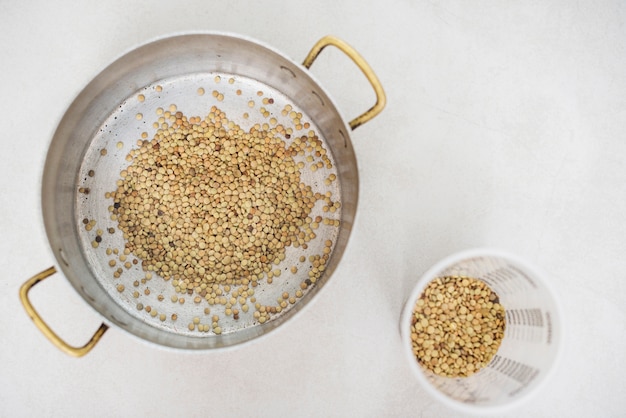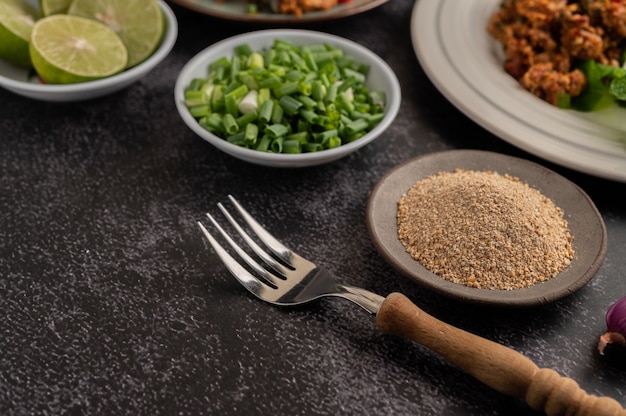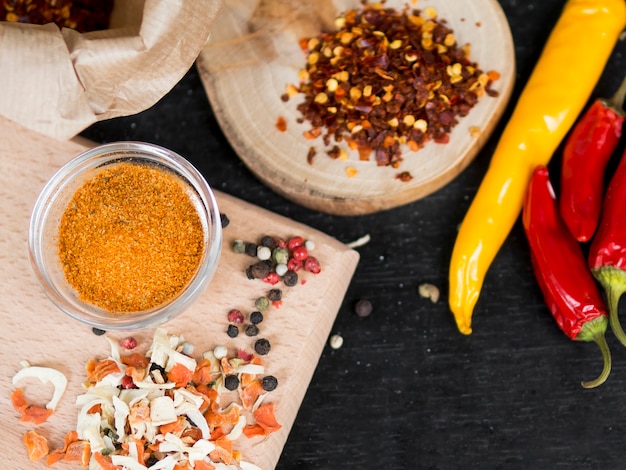Right, let's talk quinoa, shall we? This little wonder grain has been a staple in my kitchen for years, and I've learned a thing or two about cooking it just right. It's not rocket science, but there are a few key points to keep in mind to ensure you end up with fluffy, delicious quinoa every time. I'm not talking about that mushy, sticky mess you might have encountered in the past, no, no, no! We're going for a light, airy, and slightly chewy texture that's just begging to be devoured. So, grab your favourite pot and let's embark on this quinoa cooking adventure together.
(Part 1) Quinoa: A Little Background

Before we dive into the nitty-gritty of cooking, let's take a moment to appreciate quinoa's awesomeness. It's a complete protein, meaning it contains all nine essential amino acids, which is pretty darn impressive for a grain. It's also gluten-free, making it a great option for those with gluten sensitivities. And let's not forget about its versatility - it's perfect for everything from salads and bowls to desserts and even burgers! It's really a culinary chameleon.
Quinoa's Humble Beginnings:
Now, quinoa isn't exactly a newbie to the food scene. It's actually been around for centuries, originating in the Andes region of South America. It was a staple food for the Inca people and has been cultivated for over 5,000 years. It's fair to say this grain has a bit of history behind it. The Incas, known for their advanced agricultural practices, considered quinoa a sacred grain, believing it to be the "mother of all grains." They even incorporated it into their religious ceremonies and celebrations. It's clear that quinoa has always held a special place in Andean culture.
The Rise of Quinoa:
In recent years, quinoa has experienced a meteoric rise in popularity. It's become a darling of the health food world, lauded for its nutritional benefits and versatility. And rightly so! I'm definitely on board with this quinoa craze. This surge in popularity can be attributed to a combination of factors: a growing awareness of the health benefits of whole grains, a desire for gluten-free alternatives, and a growing interest in diverse and exotic cuisines. It has even gained the status of a "superfood," earning praise from health and nutrition experts worldwide.
(Part 2) The Importance of Rinsing: A Crucial Step

Here’s the thing: quinoa comes with a bit of a “bitter aftertaste” if you don’t rinse it. This bitterness comes from a natural compound called saponin, which acts as a natural pesticide and is found on the outer coating of the quinoa seed. The good news? It's easily washed away. You can't just throw the quinoa straight into the pot! No, no, no! It's a crucial step to achieve that fluffy, delicious texture. Trust me on this one.
How to rinse quinoa:
It's super simple. Just put your quinoa in a fine-mesh strainer and hold it under cold running water. Swish it around a bit to make sure all the saponin is gone. You'll know it's ready when the water runs clear. You can also give the quinoa a gentle rub between your hands to remove any remaining saponin. Think of it as a mini spa treatment for your quinoa! This rinsing process ensures that your quinoa cooks evenly and develops a delicate, nutty flavour without that unwelcome bitter edge.
(Part 3) Mastering the Ratio: The Key to Perfectly Cooked Quinoa

Alright, let's talk ratios, a topic that's close to my heart. You see, I used to struggle with getting the perfect texture, but then I realised it was all about the ratio. It's a bit like baking – too much liquid and you'll end up with a soggy mess, too little and you'll have dry, crumbly quinoa. We want that perfect balance.
The general rule of thumb is to use a 1:2 ratio of quinoa to water. That means for every 1 cup of quinoa, you'll use 2 cups of water. This ratio will give you perfectly cooked quinoa that's fluffy and light. Now, I know, sometimes you might want to adjust this based on your preference, but for a beginner, sticking to this ratio is a good idea.
Adjusting the Ratio:
While the 1:2 ratio is a great starting point, you might find that your quinoa needs a little more or less liquid depending on the type of quinoa you're using and your personal preference. For example, if you're using a very fine-grained quinoa, you might need to add a little extra water. If you prefer your quinoa to be a little more firm, you can use slightly less water.
It’s a good idea to experiment a bit to find what works best for you. Remember, it’s better to start with a slightly lower water ratio and add a bit more if needed. This way, you can avoid overcooking the quinoa.
(Part 4) Bringing Quinoa to Life: Cooking Time and Techniques
You’ve rinsed the quinoa, you’ve got the ratio down, now let’s get cooking!
The Classic Pot Method:
This is the most basic and straightforward way to cook quinoa. You can do this on the hob, or you can use an electric kettle.
- Combine the rinsed quinoa and water in a saucepan. You can add a pinch of salt if you like, it just brings out the flavour.
- Bring the mixture to a boil over a high heat. This initial boil helps to activate the starches in the quinoa, contributing to its fluffy texture.
- Once it's boiling, reduce the heat to a simmer, cover the pan, and cook for 15-20 minutes. You can check for doneness by giving the quinoa a gentle stir. If it's still a bit watery, keep cooking for a few more minutes. You'll notice that the quinoa will start to become translucent and the little "tails" will start to disappear. This is a sign that the quinoa is cooked through.
- Remove the pot from the heat and let it sit, covered, for about 5 minutes. This will help the quinoa absorb any remaining liquid and create a perfectly fluffy texture.
- Fluff the quinoa with a fork, and it's ready to enjoy!
The rice cooker Method:
You can also cook quinoa in a rice cooker, which is super convenient.
- Rinse the quinoa and add it to your rice cooker, along with the correct amount of water.
- Turn on your rice cooker and let it do its thing.
- Most rice cookers have a “quinoa” setting, but if yours doesn't, just use the rice setting. Some rice cookers may have slightly different settings for different types of quinoa, so check the instructions for your specific model.
- Once the rice cooker beeps, it's ready to go!
The pressure cooker Method:
For those who are short on time or prefer a more hands-off approach, cooking quinoa in a pressure cooker can be a game-changer.
- Combine the rinsed quinoa and water in your pressure cooker, adding a pinch of salt if desired.
- Secure the lid of the pressure cooker and cook on high pressure for 2-3 minutes.
- Allow the pressure to release naturally for 10 minutes before releasing any remaining pressure.
- Fluff the quinoa with a fork and enjoy!
(Part 5) Quinoa and Flavour: A Match Made in Heaven
Now, we’re on to the exciting part. Flavour! There are so many ways to bring out the best in quinoa.
The Basics:
A good start is to add some flavour to your cooking water. A bay leaf, a sprig of rosemary, or a few peppercorns can really elevate the flavour. These simple additions add a subtle depth of aroma and taste to the quinoa, enhancing its natural nutty notes.
The Spice is Right:
Don't be afraid to experiment with spices. I love adding a pinch of cumin, coriander, or turmeric for a warm, earthy flavour. Spices like cumin, coriander, and turmeric not only add a burst of flavour, but they also provide a range of health benefits, making your quinoa dish even more wholesome.
Fresh is Best:
Adding fresh herbs like parsley, cilantro, or mint to your cooked quinoa is a great way to brighten up the flavour and add a refreshing touch. These herbs complement the nutty flavour of quinoa and add a burst of freshness, making your dish more vibrant and aromatic.
A Touch of Citrus:
A squeeze of lemon or lime juice can add a bright, zesty flavour to quinoa, especially in salads. The acidity of citrus cuts through the richness of quinoa and adds a lovely balance to the dish.
Don’t Forget the Salt:
A pinch of salt is essential for enhancing the flavour of quinoa. It balances the sweetness of the grain and helps to bring out its natural flavour.
(Part 6) Quinoa: The Ultimate Versatile Grain
Alright, now that you know the basics of cooking quinoa, let's talk about the many delicious ways you can use it.
Breakfast Bowls:
Start your day with a nutritious and delicious quinoa breakfast bowl. You can add berries, nuts, seeds, yoghurt, and your favourite toppings. This is a great way to get a healthy and satisfying start to your day. The protein and fibre in quinoa will keep you feeling full and energized until your next meal.
Salads:
Quinoa makes an excellent base for salads. It adds texture and protein, and it complements a wide variety of vegetables and dressings. Think about a quinoa salad with grilled chicken, roasted vegetables, and a tangy vinaigrette. Yum!
Soup:
Quinoa is a great addition to soups, adding a hearty, nutty flavour. You can add quinoa to both hot and cold soups, and it will hold its texture well.
Stuffed Vegetables:
Quinoa is perfect for stuffing peppers, mushrooms, or zucchini. It's a great way to add protein and a filling texture to your vegetables.
Burgers and Meatless Meals:
Quinoa can be used as a binder for burgers, meatballs, and veggie patties. It's a great way to add protein and a hearty texture to your meatless meals.
Desserts:
Yes, you read that right! Quinoa can be used in desserts. It adds a unique texture and a subtle nutty flavour. Try a quinoa pudding or a quinoa crumble.
(Part 7) Mastering the Art of Quinoa: Tips and Tricks
Over the years, I’ve picked up a few tricks that make cooking quinoa even easier and more enjoyable.
The "fluff test":
Once your quinoa is done cooking, give it a gentle stir. If you see any excess water, cook it for a few more minutes. You want the quinoa to be fluffy and slightly chewy, not mushy. The quinoa should be cooked through, but it should still have a slight bite to it.
Storage Solutions:
If you're making a large batch of quinoa, you can store the leftovers in an airtight container in the refrigerator for up to 5 days. It’s a great way to have a quick and easy meal ready to go. Just make sure the quinoa is completely cooled before storing it to prevent condensation from forming.
Don’t Overcook it:
It’s important not to overcook quinoa, as this will result in a mushy texture. It’s best to err on the side of slightly undercooked rather than overcooked. If you’re unsure, it’s always better to undercook it slightly and then reheat it if needed.
Experiment with Flavours:
Don’t be afraid to experiment with different flavour combinations! Quinoa is very versatile and can be adapted to suit any taste.
Beyond the Basics:
For a more decadent flavour, you can try adding a splash of cream or milk to your cooked quinoa. This will make it richer and creamier, perfect for a comforting meal.
(Part 8) Quinoa: More Than Just a Grain
Quinoa is more than just a grain. It's a culinary adventure.
Sustainability:
Quinoa is a sustainable and environmentally friendly crop. It requires less water than other grains, and it helps to improve soil health. Quinoa is also a drought-resistant crop, making it a viable option for regions with limited water resources. This sustainable nature makes quinoa an important part of a healthy planet.
nutritional powerhouse:
Quinoa is a nutritional powerhouse packed with protein, fibre, vitamins, and minerals. It's a complete protein source, which is quite rare for a grain. Quinoa is also a good source of iron, magnesium, and potassium.
Global Staple:
Quinoa is a staple food for many cultures around the world. It's a versatile grain that can be used in a wide variety of dishes. Quinoa is increasingly gaining popularity in cuisines worldwide, reflecting its versatility and nutritional value.
(Part 9) FAQs: Your Quinoa Questions Answered
So, you’ve got some questions about quinoa, don’t you? I've been there. I get asked a lot about quinoa. Here are some of the most common questions and my answers:
1. How do I know when quinoa is cooked?
When quinoa is cooked, it will be fluffy and slightly chewy. The grains will have absorbed all of the liquid, and there won't be any excess water in the pot. You can also check by giving it a gentle stir. If it's still a bit watery, keep cooking for a few more minutes. The quinoa should be cooked through, but it should still have a slight bite to it.
2. Can I cook quinoa in a microwave?
You can cook quinoa in the microwave, but it's not ideal. It can be difficult to get a consistent texture and it may be less flavorful than quinoa cooked on the stovetop. If you choose to cook quinoa in the microwave, follow the instructions on the package.
3. What happens if I overcook quinoa?
If you overcook quinoa, it will become mushy. This is because the grains will absorb too much water and become soft. The best way to avoid overcooking is to cook it according to the instructions on the package or use the ratio of 1:2 water to quinoa.
4. What are some good quinoa recipes?
There are endless possibilities when it comes to quinoa recipes! You can find everything from simple quinoa salads to elaborate quinoa bowls and desserts. I recommend browsing online recipe sites or cooking blogs for inspiration.
5. Where can I buy quinoa?
Quinoa is widely available at most grocery stores. You can find it in the bulk aisle, the grains section, or the international food aisle. You can also purchase quinoa online.
Final Thoughts: Embracing the Quinoa Journey
Cooking quinoa is a journey. A journey of flavour, texture, and culinary creativity. Don’t be afraid to experiment and find what works best for you. And remember, it's all about enjoying the process and savouring the delicious results. Happy cooking!
Everyone is watching

Corn on the Cob: The Ultimate Guide to Perfectly Cooked Ears
Healthy MealsAh, corn on the cob. Just the name evokes images of sunny days, barbecues, and that sweet, juicy flavour that ...

Perfect Pork Roast Oven Cooking Time: A Guide to Delicious Results
Healthy MealsThere's something truly satisfying about a perfectly roasted pork. The aroma alone is enough to make your mout...

Ham Cooking Time: How Long to Bake, Smoke, or Boil a Delicious Ham
Healthy MealsAh, ham. It's a classic, isn't it? A real crowd-pleaser, especially around holidays. And when done right, it'...

Scallops: The Ultimate Guide to Perfect Cooking
Healthy MealsAh, scallops. Those delicate, sweet, and utterly delicious morsels of the sea. They hold a special place in my...

Spaghetti Squash: The Ultimate Guide to Cooking and Serving
Healthy MealsRemember that time you saw spaghetti squash at the supermarket, looking all bumpy and strange, and thought, "W...
